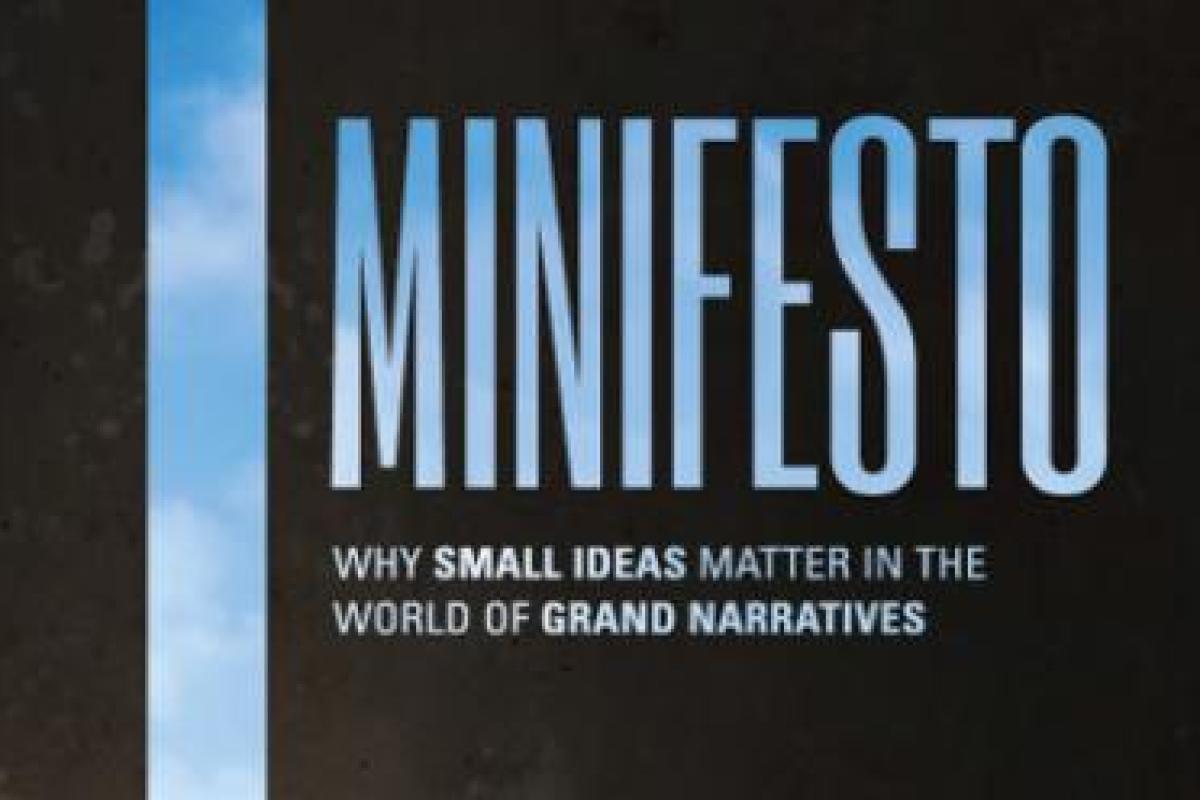By his own admission, Magnus Lindkvist doesn’t really do BIG ideas.
So perhaps it’s not surprising that “Minifesto” worked best for me, not as a treatise about why it’s important that we should avoid the danger of judging ideas by their size, but as a series of arguments, thoughts and stories that demonstrate thinking small and encouraging a variety of approaches to thinking often lead to great ideas.
Some of the best of these were, for me:
- The danger of focusing on just one idea – one big–ism. As someone who believes that in marketing the sometimes zealous pursuit of over-simplification typified by the single-minded thought can lead brands to be narrow minded, this really struck a chord with me. His examples from biology and economics of the danger of a lack of variety were very powerful.
- The difference between seeing what is, and what could be, and what a powerful tool this can be for innovation. For which he effectively uses the story of Richard James’ invention of the Slinky to make his point.
- The need to find a better definition and indeed a segmentation of ideas or as he says: “We have one word – idea – to describe a complex bundle of insights, neural network activity, synapses and narratives. Yet, like the supposedly verbally gifted Eskimos describing snow, we would need hundreds of terms to distinguish between the kind of Eureka moments that hit you in the shower and the accidental insights you get from misunderstanding something.” He goes onto suggest four: pet ideas and wild i-deas, and i-deas and we-deas.
- While it is easy and often appealing to focus on a ‘Eureka moment’ the reality is that many of these moments are in fact part of a bigger and longer gestation period. (An idea that Steven Johnson explored in his book “Where good ideas come from” )
- The importance of progressive friction as part of the creative process. He demonstrates how a variety of styles and the often negatively viewed ‘creative tensions’ can actually be a force for good. (Another theme that is being talked about in books like “Imagine” by Jonah Lehrer and articles like “The innovative power of criticism” by Roberto Vergeti in HBR)
- The notion of “positive revenge” – Lindkvist again wants us to re-consider a word often negatively viewed, in this case revenge. He explains how the anger and power of failure can inspire and drive people to future success; an idea he illuminates with the story of the creation of ‘He-Man”
So while it is clearly meant to be a general business book with stories drawn from music, popular culture and modern science, there is a lot of good stuff in it for marketers. As already highlighted, there are numerous stories about brands and their origins.
For people involved in innovation there is probably even more in the book especially as the whole book clearly fits with the current recognition of the importance of “thinking small”.
Finally, there are some great one-liners which I’m sure I will steal with pride. For example, how www no longer stands for “World Wide Web” but rather “Whatever, Whenever, Wherever”.
